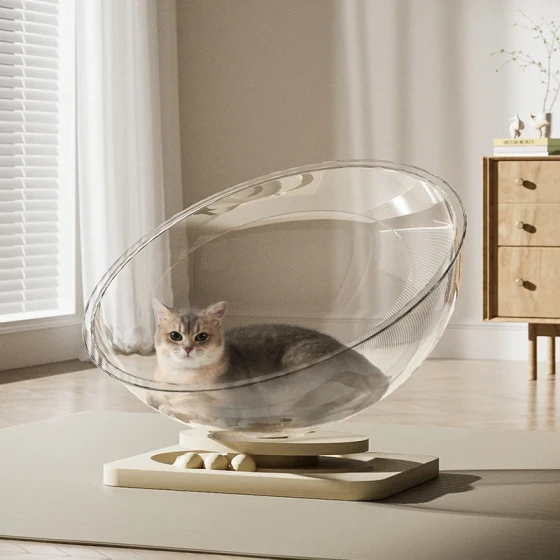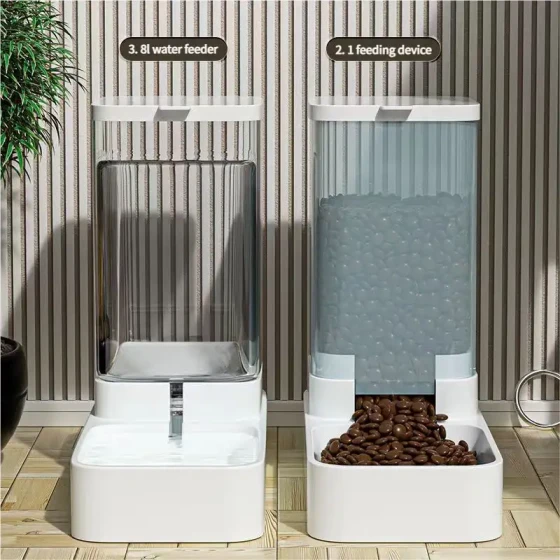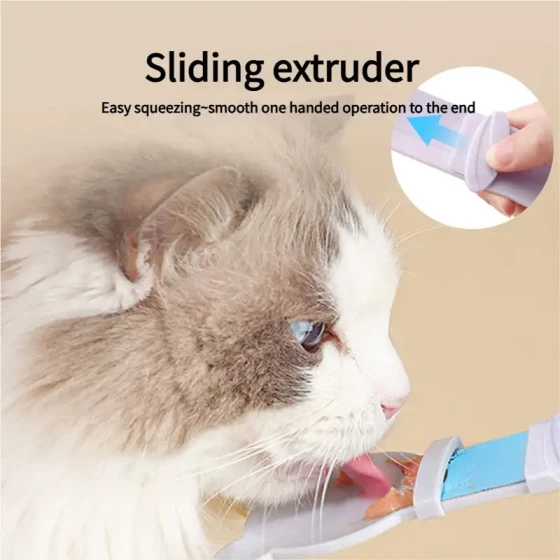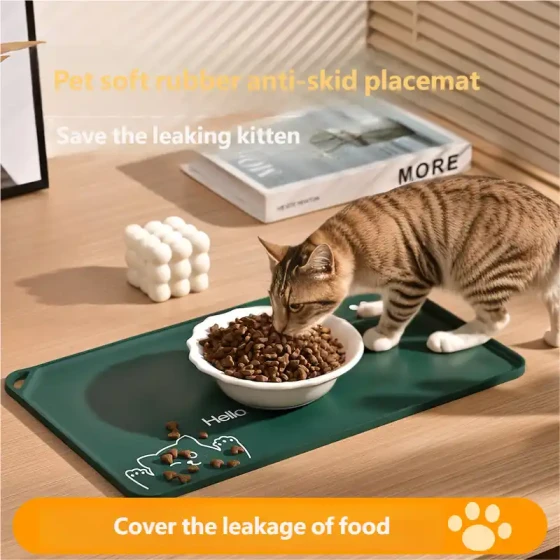Cat Has Not Eaten or Drunk for 6 Days, What to Do_Cat Starvation 6 Days Emergency Handling Guide
When your cat has not eaten or drunk for 6 consecutive days, this is not a minor issue but a "red alert" signal from your cat’s body! The most urgent and only correct way to handle a cat’s starvation lasting 6 days is — immediately take it to see a veterinarian! Delaying even one minute may increase the risk to your cat’s life because it is very likely already suffering from severe dehydration and potentially life-threatening hepatic lipidosis and other conditions.
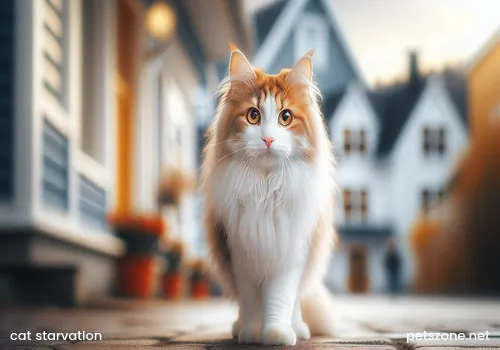
Cats are very unique animals; their metabolic mechanisms differ from humans or dogs. Especially when they do not eat for a long time, their bodies quickly experience severe chain reactions. Not eating or drinking for 6 days for a cat is equivalent to several days without food and continuous dehydration for a human, with unimaginable consequences.
Why does the cat refuse food? Is the "master" unhappy or is its body signaling a red alert?
The reasons for a cat not eating or drinking are quite "varied," ranging from physical illness to psychological stress, which can cause the "feline master" to go on strike. But starvation for 6 days almost certainly indicates a serious health problem at play. Common causes include:
- Oral diseases: Toothache, gingivitis, oral ulcers, etc., cause severe pain when cats eat, naturally causing them to "soar longingly for food" but refuse to eat.
- Digestive system issues: Gastroenteritis, pancreatitis, foreign body ingestion (like accidentally swallowing yarn balls, small toys), constipation or severe diarrhea can cause loss of appetite or even complete refusal to eat.
- Internal organ diseases: Liver diseases (especially hepatic lipidosis, described later), kidney diseases, diabetes, hyperthyroidism, etc. These chronic diseases often accompany reduced appetite.
- Infections: Various bacterial, viral, or parasitic infections, such as feline panleukopenia, feline infectious peritonitis, upper respiratory tract infections (cold), cause fever that doesn’t subside, lethargy, and refusal to eat.
- Pain: Trauma, arthritis, spinal problems; any form of pain can cause a loss of appetite in cats.
- Tumors: Growing tumors inside the body may cause discomfort and decreased appetite in cats.
- Environmental changes and stress: Although rare to see cats starve for 6 days due to this, moving house, a new pet coming in, noise, frequent strangers visiting, or even an unclean litter box can trigger stress in sensitive cats, causing short-term refusal to eat. But if it lasts for 6 days, it usually means deeper physiological problems.
- Food issues: In very rare cases, spoiled food, disliked cat food flavors, or changing to new cat food might temporarily cause refusal to eat, but generally not for such a long time.
For pet owners, it is difficult to determine the exact cause through observation alone, as many disease symptoms are similar and require professional exams for diagnosis.
Cat starving for 6 days, facing huge risks: a life-and-death test
A cat starving for 6 days is already at the very dangerous edge. It mainly faces two major life threats:
- Severe dehydration: Water is the source of life; cats are very sensitive to dehydration. Normally cats need about 50-60 ml of water per kg of body weight daily. Not eating or drinking for 6 days leads to loss of body fluids without replenishment, causing blood concentration, electrolyte imbalance, kidney dysfunction, and even shock and multiple organ failure. Dehydrated cats have poor skin elasticity (gently pulling the skin on the neck or back will return slowly or not at all), possible sunken eye sockets, dry sticky gums, and lethargy.
- Hepatic lipidosis (fatty liver): This is one of the most common and most deadly complications after cats go without food for a long time, especially in overweight or obese cats. When cats do not receive enough energy intake, their bodies start breaking down stored fat to get energy. However, a cat’s liver has a limited ability to process large amounts of fat. Excess fat is transported to the liver, exceeding hepatocyte metabolic capacity, resulting in massive fat accumulation inside liver cells, impairing liver function and even causing liver failure. It’s like a factory where raw materials (fat) keep coming in, but the production line (hepatocytes) stops due to lack of fuel (glucose), leading to large raw material buildup clogging the factory. Once hepatic lipidosis occurs, treatment is very difficult, and mortality is high.
Besides dehydration and fatty liver, prolonged starvation also causes severe malnutrition, muscle atrophy, sharp decline in immunity, reducing resistance to various diseases. It can be said that each second a cat starves 6 days is a race against death.
Emergency handling! Urgent action guide
At this point, any hesitation or self-attempts may delay the best treatment opportunity.
- See a vet immediately, no delay!
This is the only "king’s way." Don’t try force feeding or monitoring at home; 6 days have already passed the "observation period" bottom line. Take your cat immediately to the nearest pet hospital, preferably one with 24-hour emergency service. Remember, time is life! - Provide detailed information to the vet:
Give the vet as much detailed information as possible, including:- Exact number of days of the cat’s starvation.
- Whether the cat drank water during this period, even small amounts.
- Other symptoms besides not eating or drinking, such as vomiting, diarrhea, lethargy, poor spirit, abnormal urination, pain signs, difficulty breathing, etc.
- Cat's age, breed, weight, medical history (vaccinations, deworming, chronic diseases).
- Any recent changes in living environment, food changes.
- Recent exposure to toxins or trauma.
This information helps the vet narrow down the diagnosis quickly.
- Do not forcibly feed or misuse medications:
Without veterinary guidance, never attempt to forcibly feed your cat or give any human medicine.- Forced feeding: When cats feel unwell or weak, forced feeding can easily cause food to enter the trachea, leading to aspiration pneumonia and even life-threatening situations. Also, if the cat has vomiting or intestinal obstruction, forced feeding worsens the condition.
- Misuse of medication: Many human medicines are toxic to cats; even over-the-counter drugs may cause severe side effects. Blind medication without diagnosis may mask the true condition and cause irreversible harm.
What will the vet clinic do? Professional "lifesaving straw"
When you bring your cat to the vet clinic, the vet will quickly perform a series of examinations and treatments:
- Comprehensive examination and diagnosis:
- Physical examination: Measure temperature, heart rate, respiration; check dehydration level (skin elasticity, gum color and moisture, eye condition), palpate abdomen, check oral cavity, lymph nodes, etc.
- Blood tests: One of the most crucial tests. Includes complete blood count (to check for infections, anemia, etc.), biochemical tests (to assess liver and kidney function, blood sugar, electrolytes, critical for diagnosing hepatic lipidosis, kidney failure, etc.).
- Urinalysis: To assess kidney function and check for urinary tract infections.
- Imaging tests: X-rays or ultrasound can check for foreign bodies, tumors, inflammation in the digestive tract, as well as the condition of liver, kidneys, pancreas, and other internal organs.
- Special tests: Depending on preliminary diagnosis, viral testing (such as feline panleukopenia, infectious peritonitis), pancreatic enzyme testing may be performed.
- Emergency treatment and life support:
Alongside diagnosis, the vet will immediately start emergency treatment to stabilize the cat’s vital signs:- Intravenous fluids (IV drip): The most effective method to correct dehydration and maintain electrolyte balance, also provides basic energy.
- Nutritional support: For cats starving for a long time, fluids alone are not enough and nutrition will be provided.
- Nasal feeding tube or esophageal/gastric feeding tube: The key measure to rescue hepatic lipidosis! A thin tube is placed into the cat’s stomach surgically or non-surgically to infuse liquid food directly. Though it sounds frightening, this is an effective way to save the cat’s life, provide sufficient nutrition, and promote liver recovery. It’s like supplying a long-idle machine by bypassing and injecting fuel directly, getting it working again.
- Small frequent feeding attempts: Under veterinary guidance, if the cat’s condition stabilizes, they may try feeding high-energy, easily digestible liquid foods using a syringe.
- Symptomatic treatment: Based on test results, vets will administer corresponding medications such as antiemetics, painkillers, anti-inflammatories, antibiotics (if infection present), liver protectants, appetite stimulants, etc.
- Treatment of primary disease: Specific treatment plans will be initiated based on the diagnosed disease (e.g., diabetes, kidney failure).
Careful nursing during recovery: Accompany the “master” through the tough times
Even after the cat passes the most dangerous period and returns home, careful care by the owner is necessary to fully recover.
- Gradual feeding:
- Strictly follow the vet’s instructions regarding food type, amount, and feeding frequency.
- Initially, prescription nutritional pastes or liquid foods may be fed, then gradually transition to soft canned food, and finally back to regular cat food.
- Food can be slightly warmed to body temperature, as warm food smells stronger and attracts cats more easily.
- Feed small meals multiple times to avoid upsetting the gastrointestinal tract.
- Prepare a quiet and comfortable feeding environment so the cat can eat peacefully.
- Keep the environment comfortable and quiet:
Cats need adequate rest during recovery and must avoid any factors that may cause stress. Provide a warm, quiet resting area, reduce noise and disturbances by strangers. - Follow medication and recheck instructions:
Administer medications strictly as prescribed and take the cat back to the hospital for follow-up appointments on time. Follow-ups evaluate treatment effects, adjust medication plans, and ensure full recovery. - Closely observe the cat’s condition:
Monitor appetite, water intake, spirit, and excretion improvements. If any abnormalities occur, such as renewed refusal to eat, vomiting, lethargy, immediately contact the vet.
Frequently Asked Questions (FAQ)
Q1: How many days of not eating or drinking is dangerous for cats?
A1: Cats not eating or drinking for 2-3 consecutive days are already at high risk, especially overweight cats, where hepatic lipidosis may develop. Beyond 3 days, risk of death greatly increases. So, not eating or drinking for 6 days is very urgent.
Q2: If a cat starves, can we feed it by ourselves?
A2: Without clear diagnosis and veterinary guidance, forced feeding is not recommended. Forced feeding risks aspiration and may worsen certain illnesses (like intestinal obstruction). If permitted by the vet, they will teach you the proper syringe or tube feeding methods.
Q3: What to do if a cat refuses to eat dry food?
A3: Many reasons for cats refusing dry food: finicky eating, disliking the flavor, or illness. First exclude disease factors. For finicky eating, try changing flavors or brands, or mixing small amounts of canned or freeze-dried food to increase palatability. But if accompanied by other symptoms or prolonged refusal, seek immediate medical advice.
Q4: If a cat is not eating or drinking but seems mentally okay, does it need to see a doctor?
A4: Even if mental status seems okay, if a cat has not eaten or drunk for more than 2 days, it must see a vet. Cats have strong endurance, and often by the time obvious discomfort shows, the condition is already serious. "Mentally okay" may indicate early stage illness or that the cat is holding on; it should not be taken lightly.
In conclusion, when your cat has starved for 6 days, put down your phone and take it immediately to a pet hospital! This is the only responsible choice for its life. Professional veterinary teams will provide the most timely and effective help to give your "feline master" a chance at survival. Wishing all furry friends health and happiness!
References and Recommended Reading
- Cat Fanciers’ Association (CFA) - Provides cat health and care information.
- American Veterinary Medical Association (AVMA) - Authoritative veterinary organization offering animal health guidelines.
- Professional veterinary textbooks such as "Feline Internal Medicine."
- Various authoritative veterinary academic journals, e.g., "Journal of Feline Medicine and Surgery."
